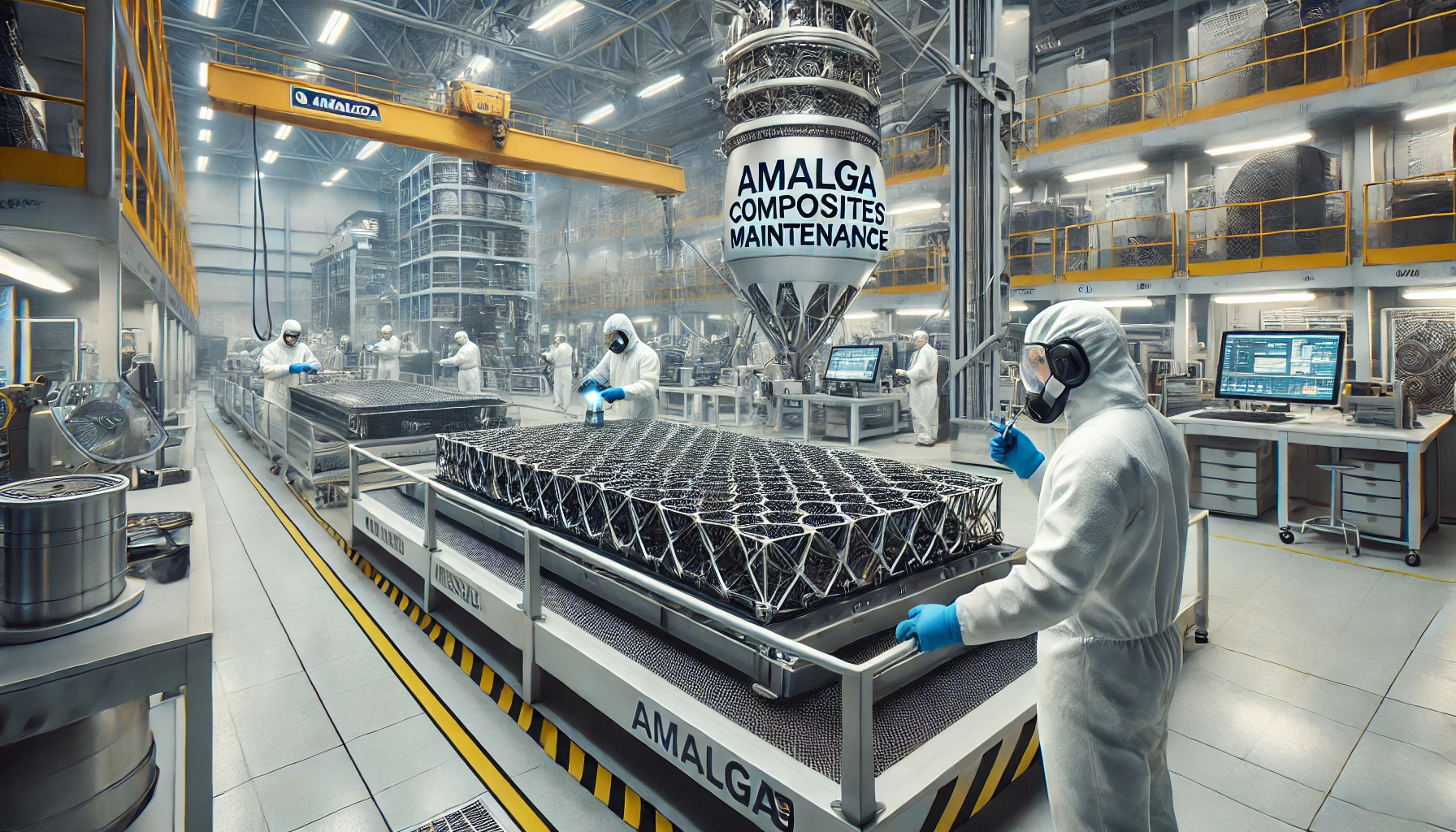- Introduction To Amalga Composites Maintenance
- Understanding Composite Materials In Amalga Products
- Types Of Composite Materials Used By Amalga
- Routine Maintenance Procedures For Amalga Composites
- Advanced Maintenance Techniques For Composite Integrity
- Preventative Maintenance Strategies
- Challenges In Maintaining Composite Materials
- Case Studies: Successful Maintenance Of Amalga Composites
- Future Trends In Composite Maintenance
- Conclusion: Optimizing Maintenance For Amalga Composites
Introduction To Amalga Composites Maintenance
Maintaining Amalga composites is key to ensuring their longevity and performance. These materials are used in various applications due to their strength and lightweight properties. Regular maintenance helps preserve these characteristics and prevent future issues.
Amalga composites are made from a combination of materials bonded together to enhance their structural properties. Commonly used in aerospace, automotive, and sports equipment, these composites require specific care to maintain their integrity over time.
For composite materials, maintenance is not just beneficial; it’s essential. Proper care ensures that Amalga composites continue to perform under stress and can withstand environmental factors. Routine checks and repairs help catch potential problems early, reducing the risk of costly repairs or replacements and extending the life of the composite components.
Understanding Composite Materials In Amalga Products
Amalga products are renowned for their utilization of high-performance composite materials, which contribute significantly to their durability and functionality. These materials are engineered by combining two or more constituent materials with different physical or chemical properties to produce a material with characteristics different from the individual components.
Types Of Composite Materials Used By Amalga
Amalga utilizes several types of composite materials in its products, each selected for its unique properties that enhance the product’s performance:
- Carbon Fiber Composites: Known for their strength and lightness, carbon fiber composites are used in applications requiring high stiffness and low weight.
- Fiberglass Composites: These are commonly used for their durability and cost-effectiveness, making them suitable for a wide range of applications.
- Kevlar Composites: Chosen for their high impact resistance and tensile strength, Kevlar composites are ideal for products that must withstand harsh operational conditions.
Each type of composite material is chosen based on the specific requirements of the product, ensuring that Amalga composites meet high standards of quality and performance.
Routine Maintenance Procedures For Amalga Composites
Regular maintenance is crucial for preserving the integrity and functionality of Amalga composites. Implementing systematic procedures ensures these materials continue to perform at their best.
Cleaning And Inspection Protocols
Cleaning: Amalga composites require specific cleaning methods to avoid damage. Use mild detergents and soft cloths to clean the surfaces. Avoid harsh chemicals and abrasive tools that can degrade the composite material.
Inspection: Regular inspections are vital to identify any signs of wear or damage early. Check for cracks, delamination, or any signs of stress, especially in areas that bear loads or are exposed to frequent movement.
Regular Maintenance Schedules
Setting up a maintenance schedule depends on the usage and environment in which the composites operate. For high-stress applications like aerospace or competitive sports equipment, more frequent checks are recommended. A typical schedule might include:
- Monthly: Quick visual inspections for obvious damage.
- Quarterly: More detailed inspections using tools like ultrasonic testers to detect internal flaws.
- Annually: Comprehensive evaluation of the composite’s condition, including stress tests if applicable.
Adhering to these maintenance schedules helps extend the life of Amalga composites and ensures they continue to provide reliable performance in their applications.
Advanced Maintenance Techniques For Composite Integrity
Maintaining the integrity of Amalga composites involves advanced techniques that ensure these materials continue to meet performance standards even after undergoing repairs. Understanding and implementing the right methods can significantly extend the life of composite-based products.
Repair Techniques For Composite Damage
Patch Repair: One common method for repairing minor cracks and punctures in composite materials is the use of patching. This involves applying a precisely cut patch of similar composite material over the damaged area and using a resin to bond the patch securely.
Resin Injection: For more significant damages, such as delamination, resin injection can be used. This technique involves injecting a resin adhesive under pressure into the delaminated areas to rebond the layers of the composite without dismantling the entire structure.
Autoclave Curing: In cases where high strength recovery is necessary, autoclave curing of the repair patches or injected resin ensures optimal bonding and curing by applying controlled heat and pressure.
Tools And Equipment Used In Composite Repair
- Hot Bonding Equipment: Used to cure composite repairs with heat, ensuring the repair materials bond well with the original structure.
- Ultrasonic Testing Devices: Essential for detecting subsurface flaws like cracks or delamination before and after repairs.
- Laminating Tools: Necessary for manual repairs involving the layering of new composite materials.
Utilizing these advanced maintenance techniques and tools ensures that repairs are effective and that the Amalga composites maintain their structural integrity and performance characteristics over their operational lifespan.
Preventative Maintenance Strategies
Implementing effective preventative maintenance strategies is crucial for extending the lifespan and maintaining the performance of Amalga composites. These strategies help anticipate and mitigate potential issues before they lead to significant damage.
Importance Of Preventative Maintenance For Longevity
Preventative maintenance is essential not only for ensuring the ongoing performance of composite materials but also for their longevity. By regularly addressing small issues, maintenance teams can prevent the accumulation of damage, which in turn minimizes costly repairs and downtime. Regular upkeep also helps maintain the structural integrity of the composites, ensuring they perform effectively under stress and reducing the likelihood of catastrophic failures.
Implementing A Preventative Maintenance Plan
Step 1: Assessment of Needs
Begin by assessing the specific needs based on the operational environment and usage of the composites. This assessment should inform the frequency and type of maintenance tasks required.
Step 2: Schedule Regular Inspections
Set a schedule for regular inspections, which should include both visual checks and more detailed assessments using tools like ultrasound or thermography to detect internal damages not visible to the naked eye.
Step 3: Routine Cleaning and Minor Repairs
Integrate routine cleaning and immediate repair of minor damages into the maintenance routine. This includes addressing any signs of wear or environmental impact that could exacerbate over time.
Step 4: Documentation and Review
Keep detailed records of all maintenance activities, inspections, and repairs. Regularly review these records to track the condition over time and adjust the maintenance plan as necessary based on observed trends and emerging issues.
Challenges In Maintaining Composite Materials
Maintaining composite materials, such as those used in Amalga products, presents unique challenges. These materials require specialized care to preserve their integrity and functionality over time.
Common Issues With Composite Materials
- Delamination: Layers within composite materials can separate due to impact or stress, compromising structural integrity.
- Moisture Ingress: Composites are susceptible to water absorption, which can lead to weakening of the material and potential failure.
- UV Degradation: Prolonged exposure to ultraviolet light can degrade the resins used in composites, leading to brittleness and reduced strength.
- Stress Concentrations: Due to their layered nature, composites can develop stress concentrations at points of heavy load or attachment, which may lead to cracks or other failures.
Solutions To Overcome Maintenance Challenges
- Regular Inspections: Implementing a rigorous inspection regime can help identify issues like delamination or stress concentrations early before they lead to significant damage.
- Environmental Protection: Applying UV protective coatings and ensuring that composites are not exposed to excessive moisture can mitigate environmental degradation.
- Repair Techniques: Developing expertise in advanced repair techniques, such as resin injection or autoclave curing, ensures that damages are promptly and effectively addressed.
- Design Considerations: Redesigning components to distribute stress more evenly or selecting more suitable materials for specific environments can prevent many common issues associated with composites.
By addressing these challenges with proactive strategies and tailored solutions, maintenance teams can effectively extend the life and enhance the performance of Amalga composite materials.
Case Studies: Successful Maintenance Of Amalga Composites
Analyzing real-world examples provides valuable insights into the effective maintenance of Amalga composites. These case studies highlight strategies that have led to successful outcomes and the lessons learned from those experiences.
Examples Of Effective Maintenance Strategies
Case Study 1: Aerospace Component Maintenance
- Strategy: Implementation of a predictive maintenance program using sensor data to monitor stress and fatigue.
- Outcome: Early detection of potential failures allowed for timely repairs, significantly reducing downtime and maintenance costs.
Case Study 2: Marine Application of Composites
- Strategy: Regular ultrasonic inspections to detect water ingress and delamination in hull components.
- Outcome: Maintenance teams were able to repair minor issues before they became major, extending the life of the composite materials used in marine environments.
Lessons Learned And Best Practices
- Early Detection is Key: Both case studies underscore the importance of early detection through regular and thorough inspections. This approach allows for minor repairs before issues escalate into costly problems.
- Use of Technology: Integrating technology, such as sensors for predictive maintenance or ultrasonic tools for inspection, can greatly enhance the ability to maintain composites effectively.
- Tailored Maintenance Schedules: Customizing maintenance schedules based on the specific use-case and environment of the composite material ensures that all potential issues are appropriately addressed.
- Continual Training: Ensuring that maintenance personnel are well-trained in the latest composite maintenance techniques is crucial for the effective upkeep of these materials.
These case studies and best practices demonstrate that with the right strategies and a proactive approach, the maintenance of Amalga composites can lead to prolonged material life, reduced costs, and enhanced safety.
Future Trends In Composite Maintenance
The field of composite maintenance is rapidly evolving, with new technologies and methodologies emerging to address the unique challenges posed by these advanced materials. Staying ahead of these trends is essential for maintaining the efficiency and longevity of composites used in various industries.
Innovations In Maintenance Technologies
- Smart Sensors: The integration of smart sensors into composite structures allows for real-time monitoring of stress, temperature, and other critical factors. These sensors provide continuous data, enabling predictive maintenance and early detection of potential issues.
- Automated Inspection Drones: Drones equipped with high-resolution cameras and sensors are increasingly being used for inspecting large composite structures, such as aircraft and wind turbines. These drones can access hard-to-reach areas and provide detailed images and data, making inspections more efficient and comprehensive.
- Advanced Repair Materials: New repair materials, such as self-healing composites and advanced resins, are being developed to enhance the durability of repairs and extend the life of the composite materials.
Predictions For Future Maintenance Needs
- Increased Demand for Predictive Maintenance: As the use of composite materials grows in critical industries like aerospace and automotive, there will be a greater emphasis on predictive maintenance. This approach will become standard practice, reducing downtime and preventing catastrophic failures.
- Adoption of AI and Machine Learning: AI and machine learning algorithms will play a larger role in analyzing maintenance data, predicting failure points, and optimizing maintenance schedules. These technologies will allow for more precise and cost-effective maintenance planning.
- Sustainability in Maintenance Practices: With a growing focus on environmental sustainability, future composite maintenance will likely incorporate more eco-friendly materials and processes. This shift will include the development of recyclable composites and less hazardous repair methods.
Conclusion: Optimizing Maintenance For Amalga Composites
Effective maintenance is crucial for the longevity and performance of Amalga composites. Regular inspections, advanced repair techniques, and the adoption of new technologies are key to keeping these materials in top condition. Moving forward, integrating smart technologies like sensors and AI-driven predictive maintenance will further enhance care for these composites, ensuring they remain reliable and efficient in demanding applications. By staying ahead of trends and implementing proactive strategies, industries can optimize the maintenance of Amalga composites, reducing costs and extending their useful life.
Thank you for visiting our Blog! For more engaging content, please check out the related category.





